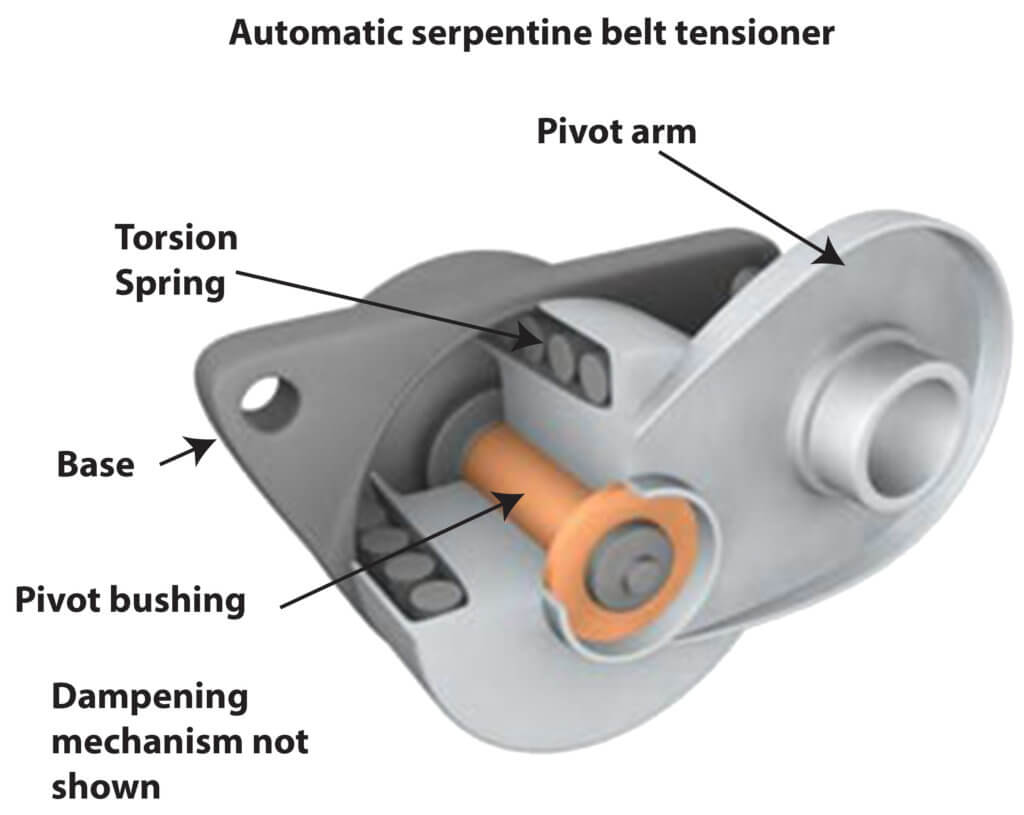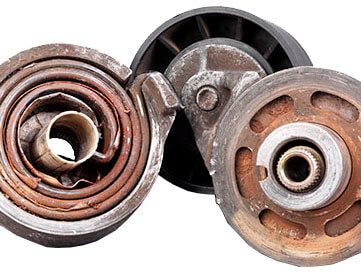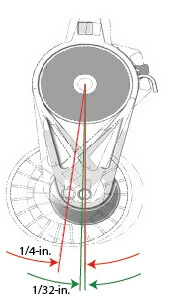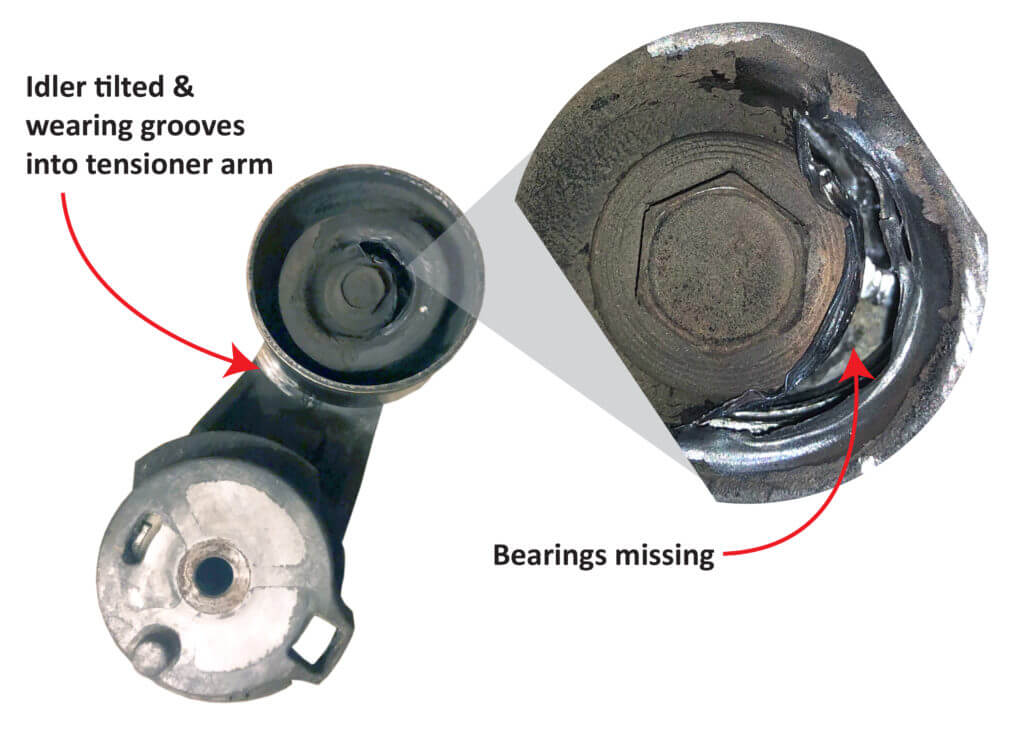Bad Serpentine Belt Tensioner Symptoms
Bad Serpentine belt tensioner symptoms — when it’s time to replace the belt tensioner
A serpentine belt tensioner does two jobs; it keeps the serpentine belt at the proper tension and it dampens power pulses that can cause the belt to vibrate. As the tensioner wears out, it produces noise and vibration that can shorten belt life and even damage the driven components. Learn the bad serpentine belt tensioner symptoms so you can replace it before it fails.
• Bad serpentine belt tensioner symptoms
• Belt squeal, especially on cold start
• Tensioner noise
• Belt tracking off-center
• Intermittent belt squeal to to binding/sticking tensioner

Anatomy of a belt tensioner. Spring, pivot bushing, dampening mechanism, base, and pivot arm
Bad serpentine belt tensioner symptom #1 — Belt squeal
Over time the torsion spring can lose tension, and reduce tension on the belt causing it to slip. You may notice the slipping by a loud squeal when you first start the engine. It usually happens on cold starts, but if the spring is more considerably worn, the slipping and squealing can happen at any time. If the tensioner isn’t applying the correct tension, it must be replaced, it can’t be adjusted.
The slipping can also cause your battery to be run down due to the belt slipping around the alternator pulley.
Serpentine belt tensioner symptom #2 — Belt comes off
If the spring inside the tensioner is rusted or broken, the pivot

Broken/rusted belt tensioner spring
arm can bind in the released position, causing the serpentine belt to come off the pulleys. If your belt has come off, slowly rotate the tensioner full cycle and release slowly to check for any binding. If you discover binding, replace the tensioner
Tensioner symptom #3 — belt is frayed at the edges
As the pivot bushing wears, the tensioner can no longer maintain its alignment with the other pulleys. That can cause the belt to ride up the side of some of the pulley which frays the edges.
Belt tensioner symptom #4 — belt noise
Every serpentine belt tensioner has a dampening

belt tensioner movement while running
mechanism to reduce pivot arm rotation between engine power pulses. When the dampening mechanism wears, the pivot arm swings in a wider arc, transferring the pull/release tension to all the driven components.
To test for a worn dampening mechanism, turn on the engine and run at idle speed. Then shine a flashlight on the roller/pulley at the end of the belt tensioner arm. The tensioner arm should only move about 1/32″. If the tensioner arm moves more than 1/32″ the dampening mechanism is worn and the tensioner must be replaced. The sign of a good tensioner is to only see 1/32” movement. If you see more, the dampening mechanism is worn and the tensioner must be replaced.
Tensioner symptom #5 — grinding noise or loud hum
A worn pivot arm idler roller bearing can cause a grinding noise or a loud hum when the engine is running. To test the bearing, use an automotive stethoscope and place the probe on a non-rotating part near the idler roller. If the bearing is bad, you’ll hear it.
If you don’t address a grinding idler bearing, it will self-destruct like this. Replace the idler at the first sign of noise or degradation.

©, 2022 Rick Muscoplat
Posted on by Rick Muscoplat